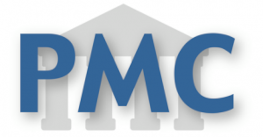Documentdetail
ID kaart
oai:pubmedcentral.nih.gov:1099...
Onderwerp
ResearchAuteur
Denis-Robichaud, José Hindmarch, Suzanne Nswal, Nancy N. Mutabazi, Jean Claude D’Astous, Mireille Gangbè, Marcellin Osborn, Andrea Zarowsky, Christina Rees, Erin E. Carabin, HélèneLangue
enEditor
BioMed Central
Categorie
BMC Public Health
Jaar
2024
vermelding datum
11-06-2024
Trefwoorden
information sectors influenza approach effective human communication channels animal stakeholders swineBeschrijving
BACKGROUND: With increased attention to the importance of integrating the One Health approach into zoonotic disease surveillance and response, a greater understanding of the mechanisms to support effective communication and information sharing across animal and human health sectors is needed.
The objectives of this qualitative case study were to describe the communication channels used between human and animal health stakeholders and to identify the elements that have enabled the integration of the One Health approach.
METHODS: We combined documentary research with interviews with fifteen stakeholders to map the communication channels used in human and swine influenza surveillance in Alberta, Canada, as well as in the response to a human case of H1N2v in 2020.
A thematic analysis of the interviews was also used to identify the barriers and facilitators to communication among stakeholders from the animal and human health sectors.
RESULTS: When a human case of swine influenza emerged, the response led by the provincial Chief Medical Officer of Health involved players at various levels of government and in the human and animal health sectors.
The collaboration of public and animal health laboratories and of the swine sector, in addition to the information available through the surveillance systems in place, was swift and effective.
Elements identified as enabling smooth communication between the human and animal health systems included preexisting relationships between the various stakeholders, a relationship of trust between them (e.g., the swine sector and their perception of government structures), the presence of stakeholders acting as permanent liaisons between the ministries of health and agriculture, and stakeholders' understanding of the importance of the One Health approach.
CONCLUSIONS: Information flows through formal and informal channels and both structural and relational features that can support rapid and effective communication in infectious disease surveillance and outbreak response.
Denis-Robichaud, José,Hindmarch, Suzanne,Nswal, Nancy N.,Mutabazi, Jean Claude,D’Astous, Mireille,Gangbè, Marcellin,Osborn, Andrea,Zarowsky, Christina,Rees, Erin E.,Carabin, Hélène, 2024, One Health communication channels: a qualitative case study of swine influenza in Canada in 2020, BioMed Central

Analysis of the ICML 2023 Ranking Data: Can Authors' Opinions of Their Own Papers Assist Peer Review in Machine Learning?
peer author-provided analysis rankings scores review learning machine science computer

